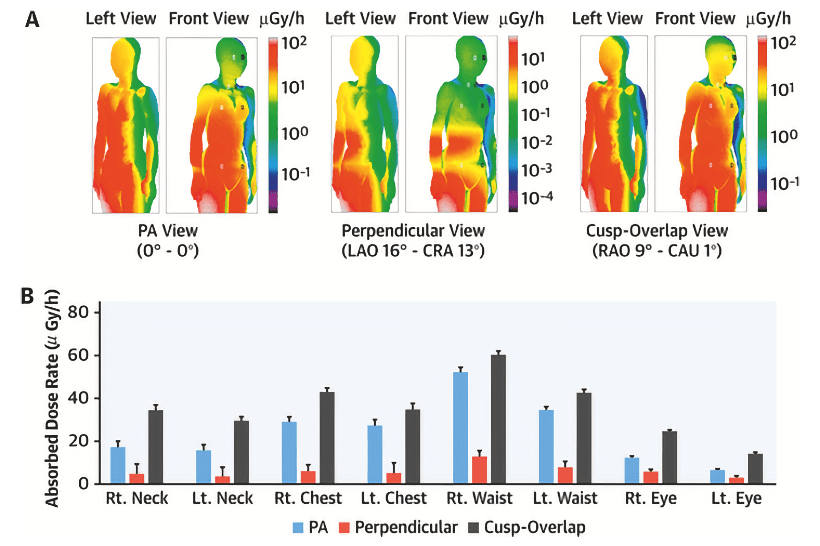By Dr Jonathan Shurlock
Edited by Dr Ahmed El-Medany
Radiation exposure is a core consideration during any procedural cardiology intervention, for both the patient and the operating team. The burden of exposure for interventional echocardiographers during structural intervention is a little explored topic, with important ramifications for long term health. A group of authors in Japan, led by Dr Akihisa Kataoka, have recently begun to shed some light on this area and published their work in JACC: Asia.
The study measured real-life radiation exposure during structural intervention procedures, and further mapped estimated absorbed radiation using the fast dose estimation system for interventional radiology (FDEIR). FDEIR simulates radiation exposure from diagnostic energy ranges using a Monte Carlo simulation.
The retrospective, observational, single-centre study included 79 consecutive procedures which required continuous transesophageal echocardiography, including 44 mitral valve interventions using the MitraClip device and 35 transcatheter aortic valve implantations (TAVI).
Both the simulated and the real-life exposure measurements demonstrated high-dose exposure areas. The highest dose areas for the echocardiographer was on the right side of the body, particularly the waist and lower body (>20 μGy/h). This was seen in all fluoroscopic directions due to radiation scattered by the edge of the patient’s bed. The authors produced a heat map of radiation exposure (Figure 1).

The authors also found variation in radiation exposure across intervention type, with a greater radiation exposure during MitraClip procedure compared with TAVI (median 0.334 μSv/mGy vs 0.053 μSv/mGy; P < 0.001). Within the TAVI procedures, self-expanding valves were associated with increased radiation exposure, when compared with balloon-expandable valves (median 0.067 μSv/mGy vs 0.039 μSv/mGy; P < 0.01), with the use of PA or RAO fluoroscopic views.
Though a small study population, this interesting research demonstrates a clear exposure to high radiation doses for interventional echocardiographers during structural procedures. This is essential for both informed discussion regarding risk for those performing these procedures, but also to begin to explore modes of mitigation in order to reduce long term risk. The authors propose personalised shields that do not interfere with the echocardiography procedure as an initial solution, while work is carried to further characterise risk.
Read the full study here: https://www.jacc.org/doi/full/10.1016/j.jacasi.2022.12.008

